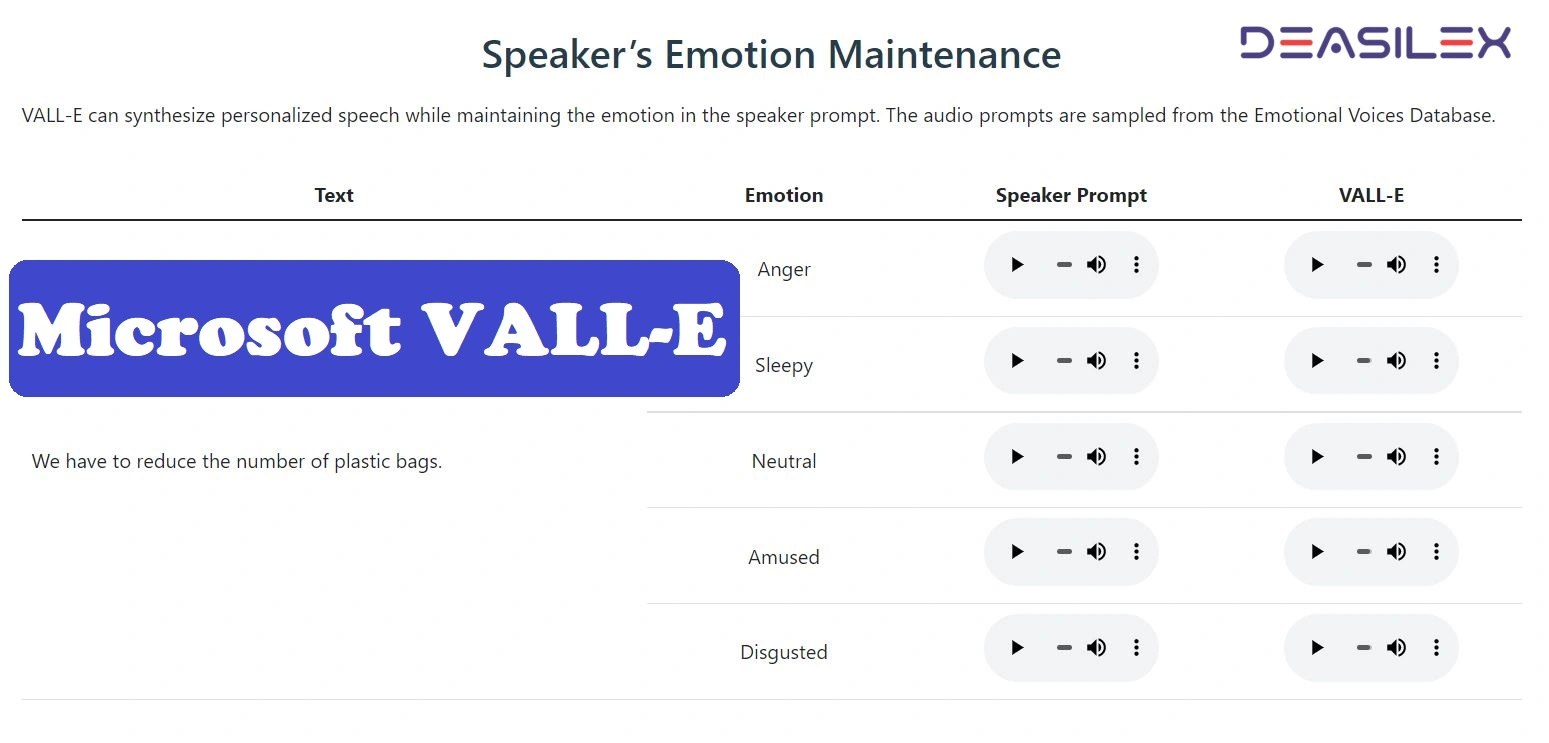Have you heard about the new neural codec language model Microsoft VALL-E? If yes, then you might be willing to know the Microsoft VALL-E features. This advancement in the TTS system will amaze you and mainly the features of VALL E.
On 5 January 2023, Microsoft revealed information about its new language model technique for text-to-speech (TTS) system, named VALL-E. It is said that VALL E has many use cases and is more efficient than the older TTS, especially in maintaining the language tone and the emotions of the speaker.
According to the information given in the research paper, the Microsoft VALL-E features are its diversity, maintenance of the acoustic environment, and, more importantly, the maintenance of the speaker’s emotion.
Are you eagerly waiting to know the features of Microsoft VALL-E? Then you are at the right place. This article will let you know about this new TTS model and Microsoft VALL-E features. Keep reading to get all the insights!
What Is Microsoft Vall-E?
Microsoft has recently launched VALL-E, a novel language model method for text-to-speech synthesis (TTS). It utilizes audio codec codes as intermediate representations.
As per the research paper, Microsoft VALL-E is trained on 60,000 hours of TTS data during the pre-training stage, which is a vastly increased amount compared to prior systems.
With merely a 3-second registered recording of an oblique speaker serving as an acoustic stimulus, VALL-E develops in-context learning ability and can synthesize high-quality, individualized speech.
It provides prompt-based zero-shot TTS approaches and contextual learning without requiring specialized pre-designed acoustic features, structural engineering, or fine-tuning.
You will be amazed to know that VALL-E can use the same input text to produce a variety of outputs while preserving the speaker’s emotion and the acoustical prompt. This VALL-E technology will have many uses. Also, you can find the samples provided by the Microsoft team on GitHub.
You might be willing to know the Microsoft VALL-E features. So, let’s now move to the next section to learn about the Microsoft VALL-E features.
Microsoft Vall-E Features
The Microsoft VALL-E features are diversity synthesis, maintenance of the acoustic environment, and maintenance of the emotions of the speaker.
When it comes to the Microsoft VALL-E features, it has three main features:
- Diversity Synthesis
Due to the unpredictability of inference, VALL-E’s output varies for the same input text as it produces discrete tokens using the sampling-based technique. Therefore, it can synthesize various personalized voice samples using different random seeds.
The diversity of inputs with various speakers and acoustic settings is usually beneficial for speech recognition, and the prior TTS system (Text-to-speech system) cannot provide this. Microsoft VALL E is an excellent alternative to provide pseudo-data for voice recognition because of its diversity feature.
- Maintenance of the Acoustic Environment
Another important Microsoft VALL-E feature is the consistency in the acoustic environment between the acoustic prompt and the production. VALL-E can provide customized speech while preserving the acoustic environment of the speaker prompt.
Since Microsoft VALL-E is trained on a larger dataset that includes more acoustic situations than the baseline dataset, it can learn about acoustic consistency rather than a clean environment exclusively during training. Consistency is demonstrated on their demo website.
- Maintenance of the Emotions of the Speaker
The most important feature of VALL-E is maintaining the speaker’s emotions. Speech synthesis includes the traditional subtopic of emotional TTS, which reconstructs speech with the appropriate emotion.
VALL-E can create customized speech while maintaining the emotional tone of speaker prompts by using the Emotional Voices Database for samples of audio prompts. This database contains speech with five different emotions.
Traditional approaches train a model by correlating the speech to a transcript and an emotion tag in a supervised emotional TTS dataset. VALL-E is able to keep the prompt’s emotion even in a zero-shot situation.
These were the main Microsoft VALL-E features. Even having such advanced features, Microsoft VALL E still faces challenges with model structure, data coverage, and synthesis robustness.
Last year, the OpenAI AI research facility, which receives funding from Microsoft, unveiled Point-E, a technique to create 3D point clouds from complicated points. Like DALL-E altered text-to-image production, Point-E also aims to alter 3D space.
Wrapping Up
Microsoft VALL E is more powerful than Google text-to-speech and will be very beneficial in the future. You can use five emotions to generate the speech from imputing just text. The Microsoft VALL-E features will help people who have lost their voices. Only their previously saved recordings are needed.
This article has given you all the insights of Microsoft VALL-E, the newly released neural codes language model for a text-to-speech generation. It also covered the Microsoft VALL-E features. Follow Deasilex to learn more about this emerging technology.
Frequently Asked Questions
Q. Is Microsoft VALL-E More Accurate Than Other Text To Speech Devices?
It is said that Microsoft VALL-E has been pre-trained on 60,000 TTS data which is very large than the other text-to-speech devices. It eventually increases the accuracy of the Microsoft VALL E.
Q. Is Microsoft VALL-E Free?
Yes, VALL-E is presently in the developing phase and is free. Currently, you can only find examples of this new TTS technology. But, there are chances of subscriptions when it gets available for public use.
Q. Which Speaker Emotions Are Maintained By The VALL-E?
VALL-E has the capability to maintain the following five speaker emotions:
- Neutral
- Anger
- Disgusted
- Amused
- Sleepy

